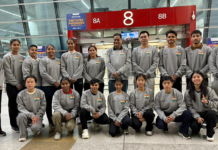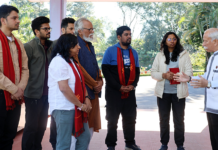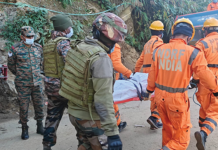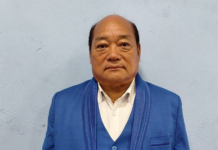[Karda Natam]
DAPORIJO, 4 Jan: Tama Chung Chung (TCC)-Taksing road is a strategically important axis in Upper Subansiri district in the area of responsibility of Project Arunank. Approval to undertake the construction of the road was accorded by China Study Group (CSG) management to facilitate the efficient management of India-China border in the disturbed region of Asaphila.
The alignment of road passes through dense forest, rocky hill face and remote tribal areas on the banks of Subansiri River. The altitude ranges from 1915mtrs to 2540mtrs. The terrain is mountainous with steep slopes and 80 percent hard rock strata.
The Upper Subansiri Valley is extremely narrow and average rainfall is 300-400 cm per annum. This sector is considered to be one of the toughest areas in projects of the Border Roads Organisation (BRO) because of extreme climatic conditions, unpredictable nature of weather and negligible development including telephone connectivity.
The TCC-Taksing road is connected from the nearest town through two small sectors comprising of Maza Sector-1, Maza Sector-3 and portion of 15 kms of Nacho-TCC road. This road is the lifeline of all border villages in the Upper Subansiri district and serves as the only road for tourist attraction such as the rapids of Subansiri River and the famous Takpasiri Budhist pilgrimage.
To facilitate early connectivity to Taksing, the formation cutting was undertaken by heli-drop of V/E/P at Reddi and Taksing, thereby ensuring three prong attack for formation cutting works. Taksing was connected in 2018. Considering the strategic importance of the road the main challenge was to facilitate continuous movement of vehicles till Taksing on war footing.
Approximately 2000 troops of the Army and para military forces are deployed for guarding the LAC in this area and have been heli-maintained for almost two decades. After the TCC-Taksing road was connected there was enormous pressure on Project Arunank to make the road worthy for vehicular traffic in order to enhance the logistics and supply of defence stores till Taksing and connect the border areas to main land.
Over the past one year i.e. since August 2019, the road has seen exponential development in terms of construction of extra wide Bailey bridges, execution of permanent works as a prelude to surfacing works. Accelerating surfacing works to enable sustained traffic of vehicles was a major challenge as this area was disconnected due to poor infrastructure and lines of communication.
The TCC-Taksing road is 45 km long. Before commencement of surfacing works the construction of culverts and drainages was a herculean task as only limited resources could reach this area. However, meticulous planning of supply of major construction stores enabled the BRO to execute the same. Successful road construction by BRTF located at Daporijo was possible by support of Project Arunank and infusion of new technology.
In the past one year, 128 RCC based at Limeking Circle has constructed 10 extra wide Bailey Bridges on TCC-Taksing road making the average of approximately one bridge per month in spite of various terrain and weather constraints such as continuous rainfall, flooding of streams, intermittent landslides, limited time available for shifting of huge quantum of bridge stores over large distances. However, with out of the box solutions the bridges were launched in record time.
In order to accelerate the progress of permanent works, the chief engineer (P) Arunank had pushed for implementation of construction of pre-cast culverts on TCC-Taksing road and enabling early commencement of surfacing works.
Continuous improvement works of formation widening, permanent works followed by surfacing works are being executed in full swing in FY 20-21 which has reduced commutation time of vehicles till Taksing by approximately 3.5 hours. In Sep 2019, the total travel time from TCC to Taksing was 7 hrs but these days, travel time has been reduced to half.
Even amidst developing tensions in the disturbed area of Asaphila and increased PLA movement in Taksing region, road construction activities are being done in full swing. The relentless efforts of the BRO in this region has improved quality of road communication drastically and enabled border forces to enhance their operational capability in response to the tensed border situation.




